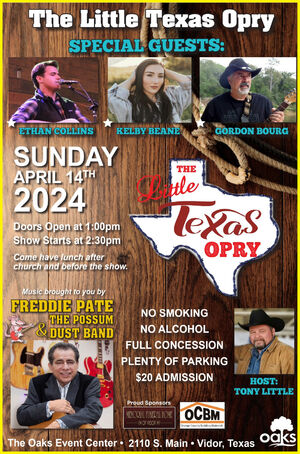Advent: The season of the ‘Already’ and ‘Not yet’
Last updated 12/14/2011 at Noon
Advent. The word suggests a beginning. Anticipation. And across Christendom it is observed annually as the buildup to Christmas Day.
Advent means “coming” and deals with the comings of Christ, both his first and second. In fact, some theologians have called Advent the season of the “Already” and the “Not yet.”
It invokes the ancient yearning of a world that had not yet experienced the birth of Jesus and draws believers to contemplate the sacred mystery in the expectation of his return. Therefore, longing, anticipation and hope are at the heart of Advent.
For the parishioners of Saint Henry Catholic Church in Bridge City, along with 64 million Catholics in the United States and 1.18 billion worldwide, the Season of Advent is celebrated in unison of global prayer and joyful reverence.
“Advent provides a spiritual tone and environment that provides a sense of balance during the hectic time leading up to Christmas,” said Father Steve Leger pastor of St. Henry, “We are all familiar with the merry-making of the holiday, with all the shopping and partying and indulging in food and drink. Advent is a reminder that the upcoming celebration of Christmas is first and foremost a religious event that has its origins in the prophecies of the Old Testament and comes to fulfillment with the Nativity account in the New Testament.”
During Advent, Catholics refrain from the contemporary and return to the old hymns of the Church. Special readings are prescribed for each of the four Sundays in Advent.
“The classic hymn of the season is “O Come, O Come Emmanuel,” Leger said, “There is actually a much bigger variety of music with most of the pieces hinting at rejoicing, peace and justice throughout the world through the birth of the Savior.”
In the Catholic, Anglican, Lutheran, Presbyterian and Methodist calendars, Advent starts on the fourth Sunday before December 25, the Sunday from November 27 to December 3 inclusive. The fourth and final Sunday of Advent this year is Dec. 18.
The Advent Wreath is one the most common and symbolic customs of the season dating back to the Middle Ages. The wreath is made of various evergreens, signifying continuous life. The four candles represent the four weeks of Advent. Three candles are purple and one is rose. The progressive lighting of the candles symbolizes the expectation and hope of the faithful.
“The traditional color of Advent is purple, because this was traditionally a penitential season in which people were encouraged to repent and seek forgiveness of their sins,” Leger said, “The pink candle denotes a day or short period of “rejoicing” during this four week season. In some liturgical circles the color of blue is also used during Advent as a sign of maternity and pending birth, that is, Mary giving birth to Jesus.”
For Roman Catholics, the first Sunday of Advent this year, Nov. 27, also marked the historic inception of a revised translation of the Mass. The first Sunday of Advent marks the beginning of the new liturgical year.
“The Church’s liturgical calendar is very seasonal, with various themes and colors and many other variations to emphasize the time of the year,” Leger said, “The Scripture readings and music at Mass during Advent focus on prophecies and other events pointing toward the birth of a Savior who will redeem Israel, and hence all of us.”
According to Leger, Advent technically ends around mid-afternoon on Christmas Eve. The liturgical feasts, including Christmas, have a vigil celebration which can be observed the evening before the actual day.
“That is the reason the Catholic Church and many others provide services on Christmas Eve,” he said, “Midnight Mass is a beautiful tradition whereby services are offered at midnight, highlighting the fact that Christ was born at night in the manger at Bethlehem.”
The Christmas season immediately follows Advent. The traditional Twelve Days of Christmas begin with December 25 and concludes with the Catholic feast of Epiphany on January 6.
Saint Henry Catholic Church is located at 475 West Roundbunch Road in Bridge City. For more information visit the church web site at http://www.sthenrybctx.org or call the parish office at (409) 735-2422.











Reader Comments(0)